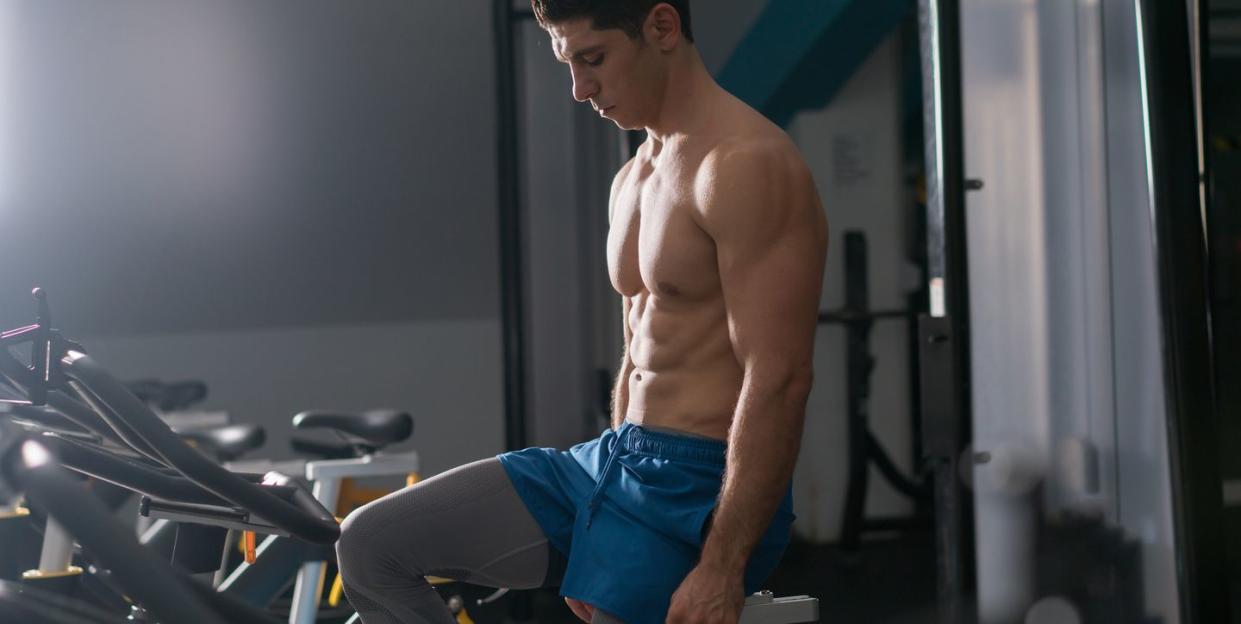Genetics Explain Why Everyone's Ab Muscles Look Different

Having a strong core is key to being stable in the saddle, climbing hills, and pushing through intervals. But have you ever wondered why some of us have defined ab muscles and others don’t?
It all comes down to genetics. Everyone’s anatomy is different, which causes the rectus abdominis (a.k.a. those six-pack muscles) to differ for everyone, says Noam Tamir, C.S.C.S., CEO and founder of TS Fitness in New York City.
“Genes influence your physiology. Having symmetrical or asymmetrical abs has to do with your genes,” says Tamir. There are other factors that can influence how your ab muscles look, too, including conditions like scoliosis or training as a unilateral athlete, he adds.
So how do you get a six-pack in the first place?
We ride because we love to ride, not because we’re chasing down six-pack abs. But greater definition is a fine goal to pursue as long as you do so with a healthy mindset and habits.
Technically, we all have a six-pack already, but the muscles may not show. The main factors that determine abdominal definition include body fat percentage, water retention, and size and strength of the abdominals themselves.
Lowering your body fat percentage is key, says Tamir. Here’s a quick anatomy refresher: Body fat comes in two categories, subcutaneous and visceral.
Subcutaneous fat is located under the skin. It provides a layer of insulation and cushioning. Visceral fat surrounds our internal organs and, in large quantities, can lead to major health problems such as metabolic disorders, heart disease, and type 2 diabetes, says Madia. The less subcutaneous and visceral fat a person has, the easier it will be for the abdominals to show because there is nothing blocking them from view.
Reducing your body fat is predominantly done through nutrition. The old saying “abs are made in the kitchen,” rings true, says Eric Madia, CSCS, head of sports science and coach at Sports Performance Lab. You cannot out-ride, out-lift, or out-exercise poor nutrition.
About 70 percent of reaching any fitness goals comes from proper nutrition supporting that goal—whether that’s taking in enough carbs to fuel a 100-mile century ride or zeroing in on your macros for defined abdominals.
Getting a defined six-pack requires dedication through tracking macronutrients (carbohydrates, fats, proteins), meal prepping, abstaining from alcohol, and knowing when to time your meals are just examples of what will be in store for people who want to achieve defined abdominals, says Madia.
While proper nutrition, you also need a combination of strength and endurance training, says Tamir. Your diet and exercise need to keep you at a low body fat percentage. It takes about a month to lose 1 percent of body fat with consistent exercise and nutrition. This is the type of routine a bodybuilder or fitness competitor might commit to, but it’s going to make your cycling training extra challenging.
Water retention is another factor for muscle definition. The more dehydrated you are, the less puffy you’ll be, allowing for more of the muscle’s striations (definition) to appear. But that said, dehydration is detrimental to your performance on the bike so you always want to keep your hydration levels high for optimal results.
Lastly, the stronger and bigger a person’s abdominals are, the easier they will appear through diet and exercise, says Madia.
If you do have defined ab muscles, they might look different than someone else’s because of your specific tendons. With longer tendons comes more space between the abdominals; with shorter tendons comes less space between them, Tamir says.
How do you maintain defined ab muscles?
It takes sacrifice to attempt to maintain defined abdominals. Because our bodies fluctuate so much on a week-to-week and even day-to-day basis, most people cannot maintain abdominals year-round (without the use of supplements or drugs). Even for bodybuilders, there is a certain peak time in their training cycle when their muscles are most defined, says Madia. “To keep abdominals year-round is a fool’s errand,” says Madia.
It’s better to adjust your goals to focus on the big cycling accomplishments you can check off throughout a year, rather than attempting to maintain a strict lifestyle for definition.
Should defined ab muscles be part of your training goals?
“If a person is trying to become stronger or faster, a six-pack or defined ab muscles should be the last thing on their mind,” says Madia. While it is necessary to have a strong core to increase strength and speed, striving for a six-pack is much more in the realm of bodybuilding, where functional strength and speed aren’t as important for athletic performance.
To get defined ab muscles, sometimes people also add direct ab work in every workout. But it’s important to remember the abs are like all other muscles. In order for them to grow, they need rest. Overtraining will actually lead to lackluster results, says Tamir.
Focusing on vanity-driven goals can cause a person to feel inadequate or constantly compare their body to another person, such as a fitness model or influencer. Fitness goals should have your best physical, mental, and emotional interests in mind, says Madia.
Instead of vanity-driven goals, optimal health is what you should strive for in fitness. “Having those vanity goals can lead to poor health. Overtraining and having the obsession with that six-pack can also lead you to an unhealthy mental state,” says Tamir.
You Might Also Like

